#the national palace museum taipei
Text
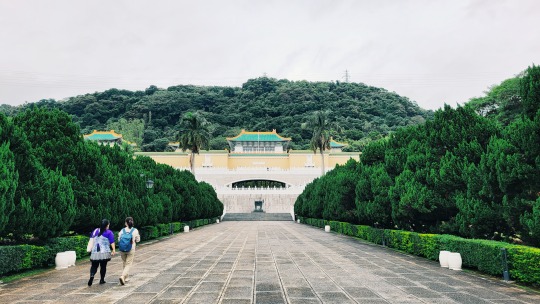
#phoneography#mobiele telefoon fotografie#mobile phone photography#smartphoneography#smartphone fotografie#smartphone photography#Taiwan#Taipei#Azië#Asia#Asian#Aziatisch#Republic of China#national palace museum#museum#musée#museo#travel photography#reisfotografie#travel#reizen#reisen#voyage#viajar#vscocam#vsco#colour#color
3 notes
·
View notes
Text
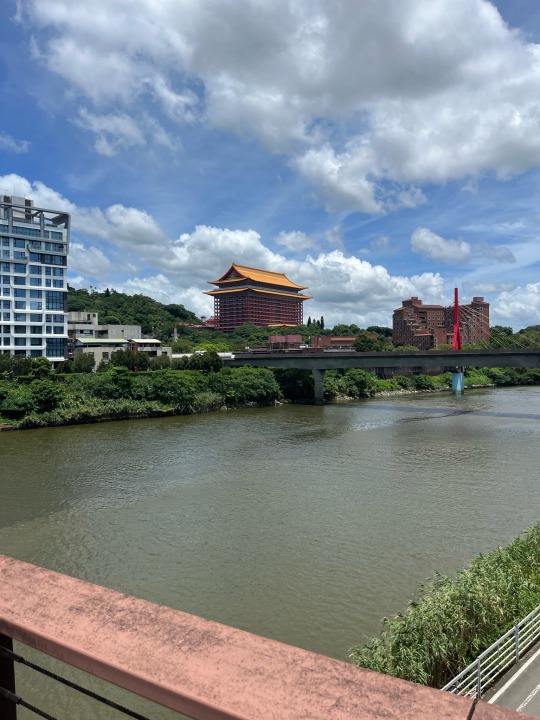


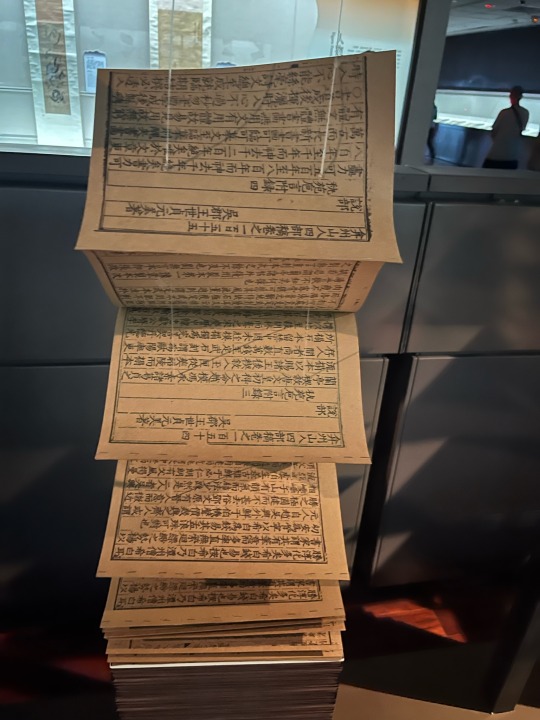



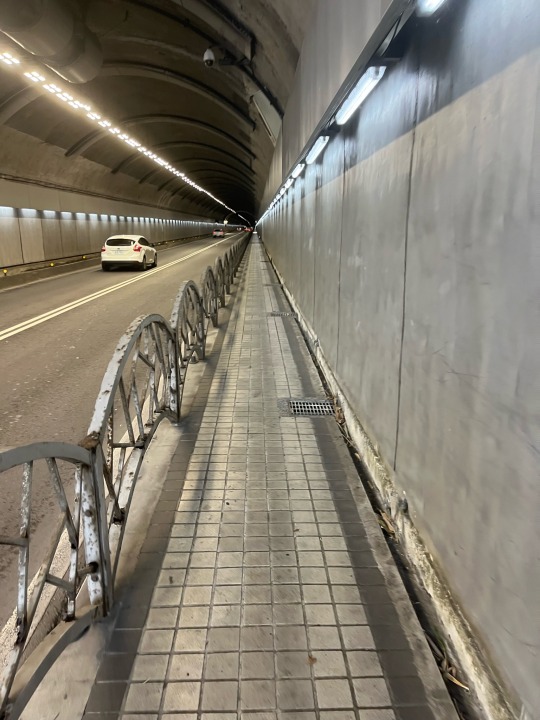
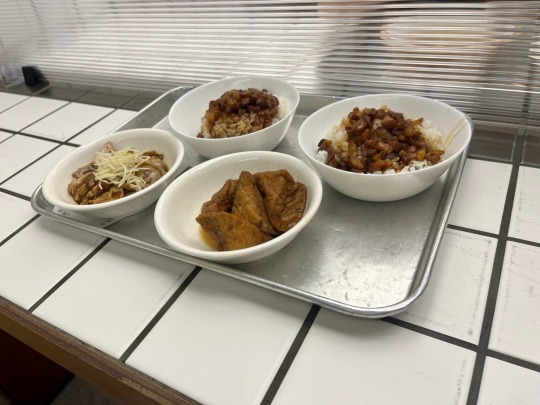
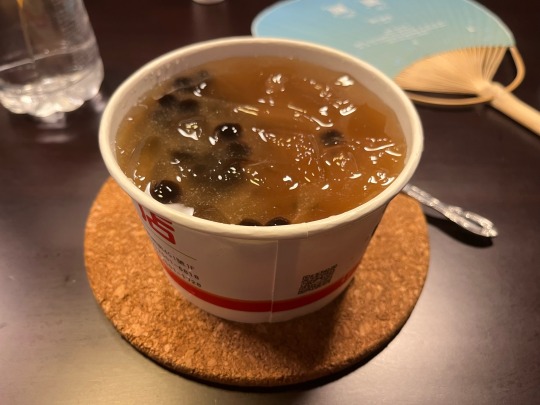
Taiwan: Day 12
#went to the National Palace Museum and somehow added yet more to my canvas bag horde#it’s a problem#(especially because they have a special exhibition on calligraphy right now and the bags to go with it)#not the stones#me stuff#taiwan#taipei
7 notes
·
View notes
Text
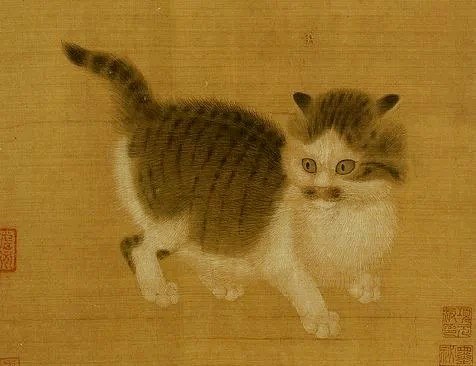
Kitten, fourth leaf in the album Li-tai Hua-fu-Chi (Album of Paintings from Various Dynasties), Song dynasty (960-1279), Collection of the National Palace Museum, Taipei, Taiwan
2K notes
·
View notes
Text

Jade cloud shaped pei ornament, China, late Hongshan culture, 3500-3000 BC
from The National Palace Museum, Taipei
421 notes
·
View notes
Text
[Hanfu · 漢服]Chinese Tang Dynasty (618–907AD) Traditional Clothing Hanfu & Hairstyle Based On Tang Dynasty Painting <唐人宮樂圖/ A Palace Concert >







【Historical Artifact Reference】:
China Tang Dynasty Painting <唐人宮樂圖/ A Palace Concert>,National Palace Museum, Taipei.
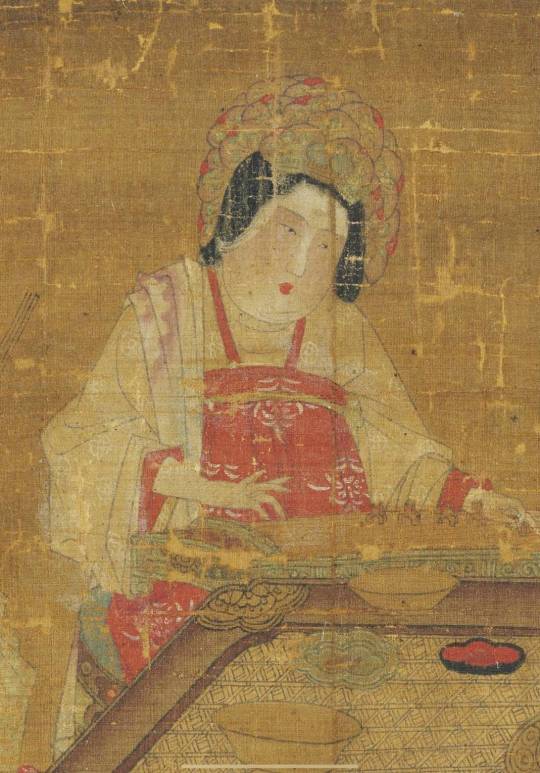

————————
📸Photo:@聆箫
👩Model :@秦卿卿
💄Styling:@青黛化妆工作室 妮妮
🔗XiaoHongShu App:http://xhslink.com/PG5qsv
————————
#chinese hanfu#Tang Dynasty (618–907AD)#hanfu#hanfu accessories#hanfu_challenge#chinese traditional clothing#china#chinese#漢服#汉服#中華風#chinese history#hanfu history#chinese fashion#hanfu girl
192 notes
·
View notes
Text
My trip to Taiwan
I took a break from posting because...I went to Taiwan! This was my first time going there, and I was mostly in Taipei. I had a great time and took many, many photos. I'll share some highlights here (along with commentary) to commemorate my trip.


Left: Liberty Square 自由廣場
Right: Chiang Kai-shek Memorial 中正紀念堂
You can't tell here, but there was a row of porta-potties directly to the left of the archway. That was a funny sight. There was also a stage in the middle of the square. Maybe they do outdoor concerts?

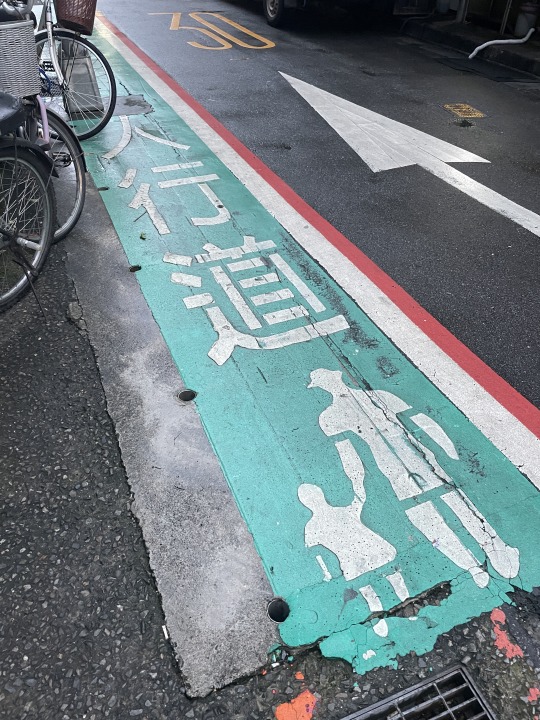
Left: Tamsui Old Street 淡水老街
Right: "Sidewalk"
Besides the main roads, most streets lacked raised sidewalks. Instead, they had a painted path. I had to get comfortable being very, very close to cars and other vehicles.


Left: Motorbike parking lot near Tamsui Old Street
Right: Covered sidewalk.
I’ve seen motorbikes before in China, but Taipei took things to a new level. Motorbikes were absolutely everywhere. I even saw this parking lot exclusively for motorbikes. They rule the streets.
In the busy downtown districts, you often don’t need an umbrella due to the covered sidewalks. You can walk for blocks and blocks while staying covered. This was pretty convenient on rainy days.

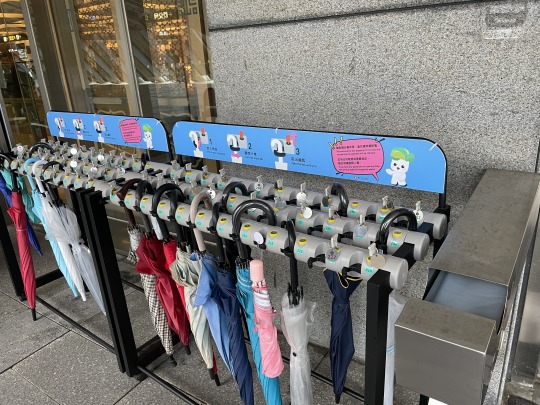
Left: Jadeite Cabbage 翠玉白菜 at the National Palace Museum 國立故宮博物院
Right: Umbrella rack (also at the museum)
Confession—I didn't think the National Palace Museum was that good. Probably because I've been to the actual Forbidden City in Beijing. And sadly, the Meat-Shaped Stone wasn't on exhibit.
In the US, some stores will provide a plastic bag for your wet umbrella. In Taipei, many stores had a rack or basket outside instead. Most were not as secure or elaborate as the one pictured.
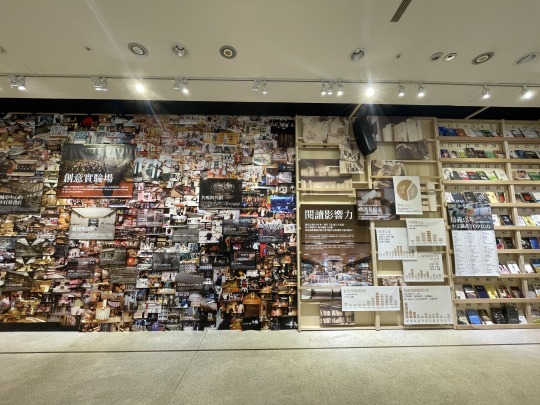

Left: Eslite Xinyi Store (bookstore) 誠品信義店
Right: Sun Yat-sen Memorial 國父紀念館
I bought a couple books and a Yoga Lin CD at the Eslite 24-hour bookstore. I only planned to swing by, but I think I spent 2 hours there. I definitely recommend checking it out if you're in Taipei.


Taipei 101 台北101
It was overcast when I went to Taipei 101, but the view was still nice. On the bright side, there was NO line. 101 is by far the tallest building around, so you really feel that you're looking down at the city.

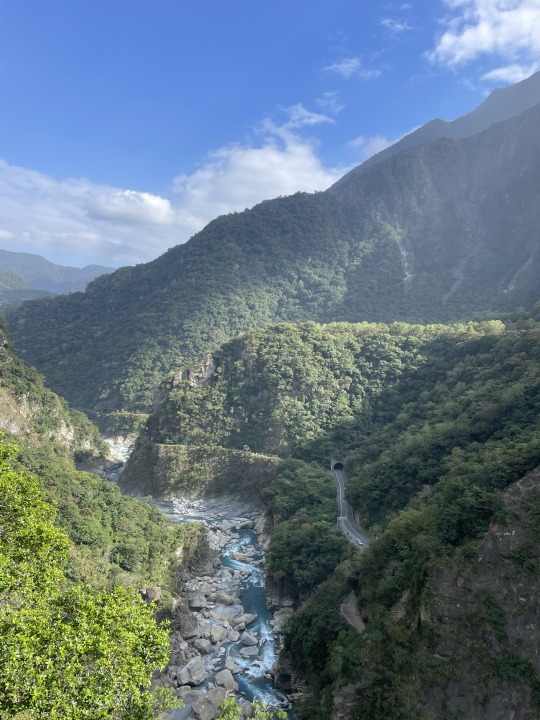
Taroko National Park 太魯閣國家公園
Taroko was the only place I visited outside of the Taipei/New Taipei City area. It's in Hualien county on the east coast. There were so many betel nut stores in the countryside on the way there.
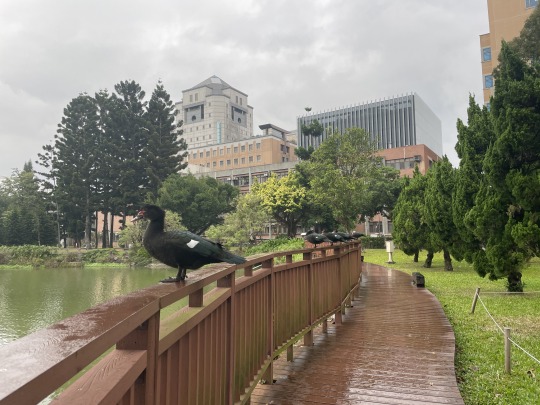

Left: Pond at NTU 國立臺灣大學
Right: 228 Peace Memorial Park 二二八和平紀念公園
Taipei has the best parks! They really put American parks to shame. Before going, I didn't understand why so many Taipei parks are tourist destinations with 4.5+ star reviews, but now I totally get it.
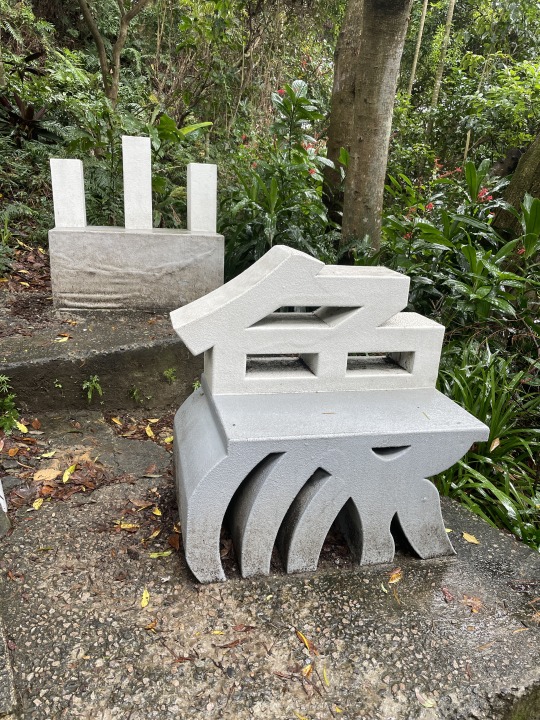

Elephant Mountain 象山
I didn’t realize how mountainous Taiwan is. Taipei is cradled by mountains, so there are many places to hike, even within city limits. I braved the rain for the famous view from Elephant Mountain.


Subway billboard 臺北捷運
The Taipei Metro/MRT was amazing. So fast, clean, frequent, and convenient. US subway systems are a joke in comparison. These are from an amusing series of billboards promoting riding etiquette.
Some other observations:
I was quite impressed by all of the English signage in Taipei. I think it would be very easy to navigate even if you don’t know Chinese. Many stores and small eateries had menus, signs, etc. in English.
I knew Taiwan had many convenience stores, but I was not prepared to see a Family Mart or 7/11 on every block. Someone needs to open this style convenience store in the US ASAP.
I saw numerous adds featuring Korean actors like Son Ye-jin and also kpop groups like IVE and NewJeans. I also heard kpop playing at various stores, whereas in America, I only hear it at Hmart.
I was struck by how many street signs and subway stops names used pinyin romanization. There was a lot of inconsistency and mixing of different romanization systems. For example, you have Taipei vs. Beitou (same character: 北).
There were many Japanese stores, pharmacies, and restaurants. Upon further consideration, this makes sense given Taiwan's history, but it stood out to me nonetheless.
Overall, I had a lovely time in (mostly) Taipei. As a big city (but not too big) surrounded by beautiful nature, there's something for everyone. I already want to go back! Of course I also want to see some other areas of Taiwan too. Maybe next year.
86 notes
·
View notes
Note
what was your favorite part about taiwan from the time you lived there and what was the biggest cultural shock? curious as someone who moved from taiwan to the us.
Everyone in Taiwan is VERY NICE! I have been to many parts of the world but Taiwanese people in particular were very courteous, and not just out of manners, they're just straight up friendly. They have great food, I found it difficult to get used to the meat-to-fat ratio of their meats tho, I was not used to the gelatinous texture. Stinky Tofu is INSANE! Entire streets only smell like stinky tofu!! The city feels super safe outside of the swarm of mopeds whom often crashed into each other at the intersection outside my apartment. I lived near the Miramar mall in Taipei, the park nearby was massive and incredible and if I'm correct, spanned the entirety of Taipei? Perhaps my favorite place I visited would be Taroko gorge which is beautiful as hell, Jiufen was surreal, and the National Palace Museum. Taiwan is dope.
2K notes
·
View notes
Text
Married Mongolian Women’s Hairstyle in the Yuan Dynasty
Mongolians have a long history of shaving and cutting their hair in specific styles to signal socioeconomic, marital, and ethnic status that spans thousands of years. The cutting and shaving of the hair was also regarded as an important symbol of change and transition. No Mongolian tradition exemplifies this better than the first haircut a child receives called Daah Urgeeh, khüükhdiin üs avakh (cutting the child’s hair), or örövlög ürgeekh (clipping the child’s crest) (Mongulai, 2018)
The custom is practiced for boys when they are at age 3 or 5, and for girls at age 2 or 4. This is due to the Mongols’ traditional belief in odd numbers as arga (method) [also known as action, ᠮᠣᠩᠭᠤᠯ, арга] and even numbers as bilig (wisdom) [ᠪᠢᠴᠢᠭ, билиг].
Mongulai, 2018.
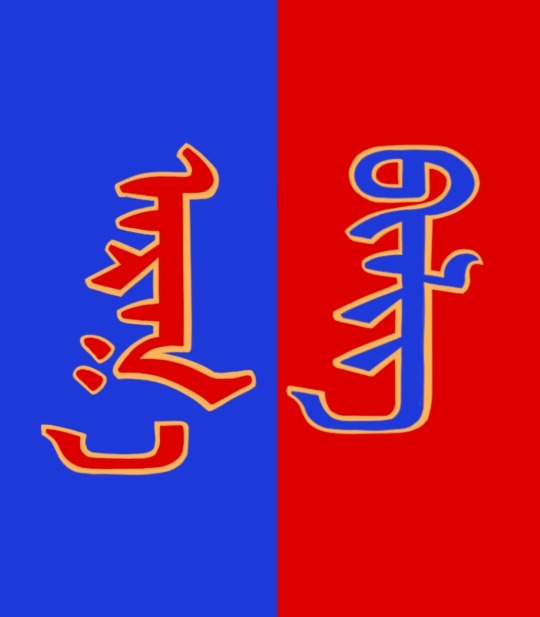
The Mongolian concept of arga bilig (see above) represents the belief that opposite forces, in this case action [external] and wisdom [internal], need to co-exist in stability to achieve harmony. Although one may be tempted to call it the Mongolian version of Yin-Yang, arga bilig is a separate concept altogether with roots found not in Chinese philosophy nor Daoism, but Eurasian shamanism.
However, Mongolian men were not the only ones who shaved their hair. Mongolian women did as well.
Flemish Franciscan missionary and explorer, William of Rubruck [Willem van Ruysbroeck] (1220-1293) was among the earliest Westerners to make detailed records about the Mongol Empire, its court, and people. In one of his accounts he states the following:
But on the day following her marriage, (a woman) shaves the front half of her head, and puts on a tunic as wide as a nun's gown, but everyway larger and longer, open before, and tied on the right side. […] Furthermore, they have a head-dress which they call bocca [boqtaq/gugu hat] made of bark, or such other light material as they can find, and it is big and as much as two hands can span around, and is a cubit and more high, and square like the capital of a column. This bocca they cover with costly silk stuff, and it is hollow inside, and on top of the capital, or the square on it, they put a tuft of quills or light canes also a cubit or more in length. And this tuft they ornament at the top with peacock feathers, and round the edge (of the top) with feathers from the mallard's tail, and also with precious stones. The wealthy ladies wear such an ornament on their heads, and fasten it down tightly with an amess [J: a fur hood], for which there is an opening in the top for that purpose, and inside they stuff their hair, gathering it together on the back of the tops of their heads in a kind of knot, and putting it in the bocca, which they afterwards tie down tightly under the chin.
Ruysbroeck, 1900
TLDR: Mongolian women shaved the front half of their head and covered it with a boqta, the tall Mongolian headdress worn by noblewomen throughout the Mongol empire. Rubruck observed this hairstyle in noblewomen (boqta was reserved only for noblewomen). It’s not clear whether all women, regardless of status, shaved the front of their heads after marriage and whether it was limited to certain ethnic groups.
When I learned about that piece of information, I was simply going to leave it at that but, what actually motivated me to write this post is to show what I believe to be evidence of what Rubruck described. By sheer coincidence, I came across these Yuan Dynasty empress paintings:

Portrait of Empress Dowager Taji Khatun [ᠲᠠᠵᠢ ᠬᠠᠲᠤᠨ, Тажи xатан], also known as Empress Zhaoxian Yuansheng [昭獻元聖皇后] (1262 - 1322) from album of Portraits of Empresses. Artist Unknown. Ink and color on silk, Yuan Dynasty (1260-1368). National Palace Museum in Taipei, Taiwan [image source].

Portrait of Unnamed Imperial Consort from album Portraits of Empresses. Artist Unknown. Ink and color on silk. Yuan Dynasty (1260-1368). National Palace Mueum in Taiper, Taiwan [image source].

Portrait of unnamed wife of Gegeen Khan [ᠭᠡᠭᠡᠨ ᠬᠠᠭᠠᠨ, Гэгээн хаан], also known as Shidibala [ᠰᠢᠳᠡᠪᠠᠯᠠ, 碩德八剌] and Emperor Yingzong of Yuan [英宗皇帝] (1302-1323) from album Portraits of Empresses. Artist Unknown. Ink and color on silk. Yuan Dynasty (1260-1368), early 14th century. National Palace Museum in Taipei, Taiwan [image source].
To me, it’s evident that the hair of those women is shaved at the front. The transparent gauze strip allows us to clearly see their hairstyle. The other Yuan empress portraits have the front part of the head covered, making it impossible to discern which hairstyle they had. I wonder if the transparent gauze was a personal style choice or if it was part of the tradition such that, after shaving the hair, the women had to show that they were now married by showcasing the shaved part.
As shaving or cutting the hair was a practice linked by nomads with transitioning or changing from one state to another (going from being single to married, for example), it would not be a surprise if the women regrew it.
References:
Mongulai. (2018, April 19). Tradition of cutting the hair of the child for the first time.
Ruysbroeck, W. V. & Giovanni, D. P. D. C., Rockhill, W. W., ed. (1900) The journey of William of Rubruck to the eastern parts of the world, 1253-55, as narrated by himself, with two accounts of the earlier journey of John of Pian de Carpine. Hakluyt Society London. Retrieved from the University of Washington’s Silk Road texts.
#mongolia#mongolian#yuan dynasty#mongolian history#chinese history#china#boqta#mongolian traditions#history#gegeen khan#empress dowager taji#mongol empire#William of Rubruck#historical fashion#arga bilig#central asia#central asian culture#mongolian culture#asia
281 notes
·
View notes
Text
I'm back!

Barring one (1) instance of your girl hitting herself in the face with a tennis racket, I had an amazing time in Taipei (also topped up my tan lol)! It's definitely been restful taking time off Tumblr, I might have to do this more often 😜
I also had some *ahem* very fruitful daydreams *cough* about Summer House Frankie on the flight back. I still haven't really sat down and planned it out yet, it might be a mini series, it might be a full-blown series... an official announcement will be forthcoming in August after I finish Palomino.
I plan on taking it easy this weekend to catch up on some reading, and I'll also do a little sleepover for my recent follower milestone! It's a sleepover with a twist though - hopefully it will be fun and not just in my head, we'll see 🙈
I'll be spending this week catching up on what I've missed. In the meantime - enjoy some unsolicited photos of the porcelain collection at the National Palace Museum below the cut, which was definitely a highlight for me in Taipei!









67 notes
·
View notes
Text

MWW Artwork of the Day (11/4/23)
Liu Guandao (Chinese, 1258–1336)
Kublai Khan on a Hunting Expedition (c. 1280)
Ink & color on silk, 182.9 x 104.1 cm.
National Palace Museum, Taipei
Liu Guandao was born around 1258 in Zhongshan (now Dingxian), Hebei. Excelling in realism, he was said to be a self-taught painter and worked as one of the "very few" court artists at the Yuan court. This painting, "Kublai Khan Hunting," features Kublai, Empress Chabi, and a few servants, amidst "a barren scene of loess … and a few hills". This painting is one of Liu's more famous works. The National Palace Museum catalog say of it that "the figures are meticulously rendered and the animals are all life-like in a naturalistic scene," but that Liu's depiction of Kublai Khan also confirms Marco Polo's account of the ruler as an "aging and obese man".
17 notes
·
View notes
Text

#phoneography#mobiele telefoon fotografie#mobile phone photography#smartphoneography#smartphone fotografie#smartphone photography#Taiwan#Taipei#national palace museum#Taiwan national museum#museum#musee#museo#hill#palm tree#palm trees#palace#palace museum#new taipei city#new taipei#Azië#Asia#vscocam#vsco#colour#color
2 notes
·
View notes
Text
The Meaning of Huanyue 浣月 / Cleansing Moon
On a superficial level, Huanyue 浣月 can be broken down to Cleansing Moon. Which is not entirely wrong. But hmm, has anyone ever told y’all that there is a famous painting named the, 「Huanyue Picture 浣月图」?
But before I start, I’m going to put a giant disclaimer that this is the only thing that I can find that’s even remotely related to Huanyue. I can’t find a poem with both characters in the same line lol. So I guess this picture was the inspiration behind Huanyue? And well, if it isn’t then I guess we’ll all learn about the existence of this picture either way. 🙃

So this picture is drawn by an anonymous painter in the Five Dynasty/Ten Kingdoms period and if you ever want to view it, it’s in the National Palace Museum in Taipei.
The bright moon hangs high in the painting. There are various plants in the courtyard - branches, wutong, banana leaves, hibiscus and daisies. A dragon lays coiled on the stone, a woman holding a pearl bends over the basin, trying to wash the pearl. There are three attendants whom appear serious whilst holding something; some think it could be incense for prayers. It’s common for women to pray to the moon since the Tang Dynasty, so it’s guessed that this picture was probably depicting moon worship.
So yes, this likely was the inspiration between 浣月 Huanyue. It has some connotations to moon worship. But lol, I’m not sure what inspired MXS to use this as a reference. Again lol, there is a lot of “feminine” symbolism in this novel. 😂 (Though I have no idea why at this moment of time). I’ll be updating this meta if I find new more information, but that’s it for now!
32 notes
·
View notes
Text

Princess Grace of Monaco visits the National Palace Museum near Taipei, in June, 1982 in Taiwan.
9 notes
·
View notes
Text

This object is a bi 壁 disc that dates back to the Eastern Han Dynasty period (25 BC - 220 AD). It is made of jade, measures 16,55 cm in height and has a diameter of 13,47 cm. It has the characteristic flat and circular shape of bi discs, however, what is immediately striking is the complex system of decorative motifs on the edge, characterized by inlaid spirals and by the presence of the characters chang 長 “long; forever” and le 樂 “happiness”, respectively placed on the upper and lower ends, similarly conveying the meaning of "eternal joy". The innermost part is decorated with rows of equidistant dots engraved on the smooth surface; this decoration is usually referred to as ‘rice-grain’ pattern. The story of bi discs dates back to Neolithic China, when their main purpose was ritualistic. Many bi discs were found in tombs, buried with the bodies of high social-status individuals. Scholars nowadays believe that the bi symbolized the tian 天 "sky" and that its peculiar form derived from the observation of sun's movement by the ancient Chinese population. Bi discs also appeared widely in Han burials.
This object is part of the permanent exhibition "Art in Quest of Heaven and Truth" at the National Palace Museum of Taipei.
8 notes
·
View notes
Text

Cloissone censer in the form of a duck, China, Ming Dynasty, 1368 - 1644 AD
from The National Palace Museum, Taipei
258 notes
·
View notes
Photo
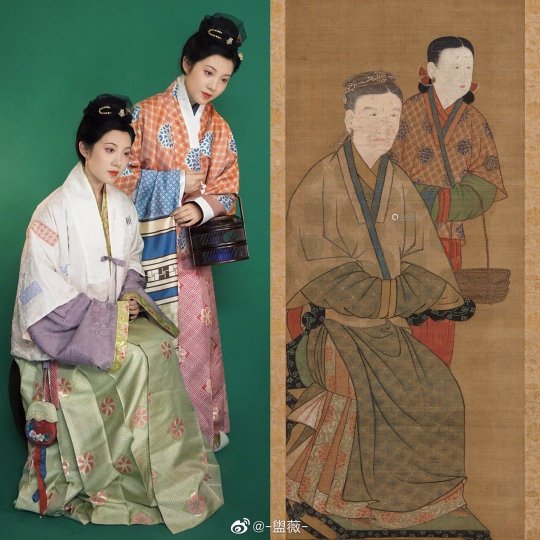


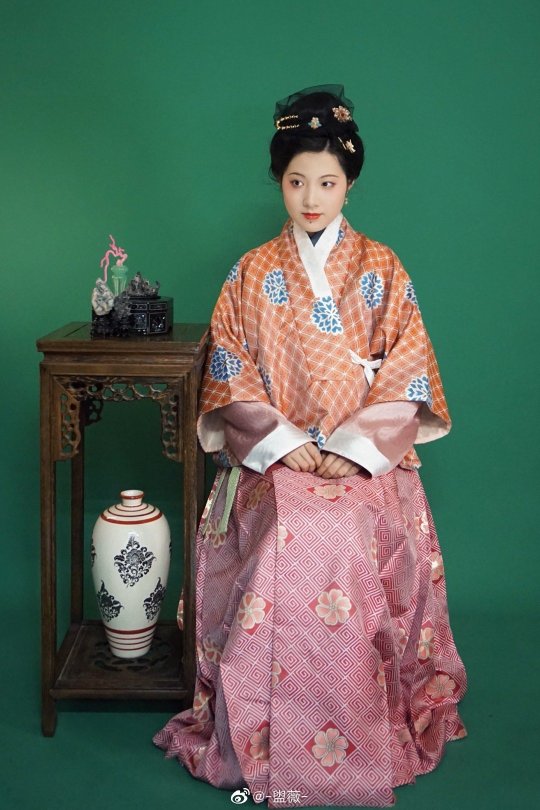
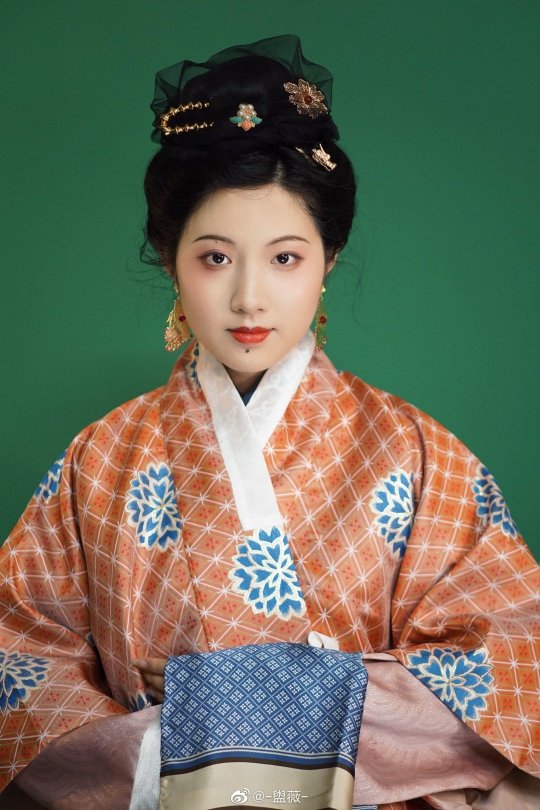
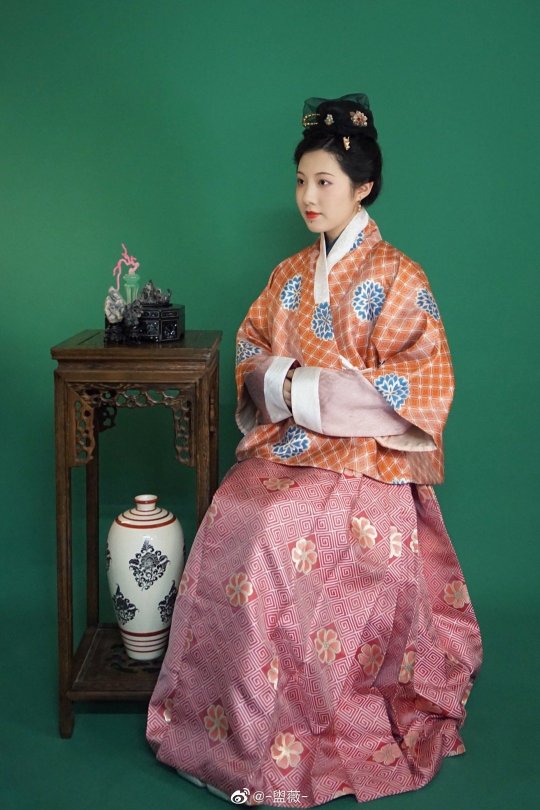



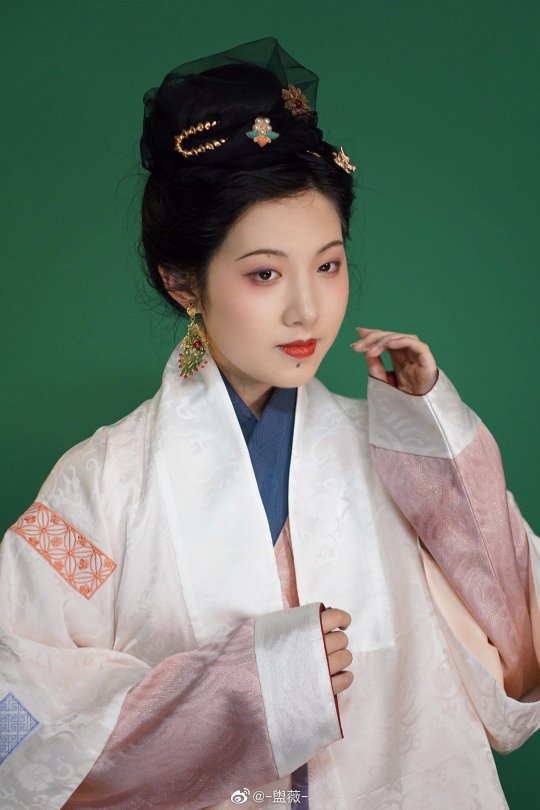

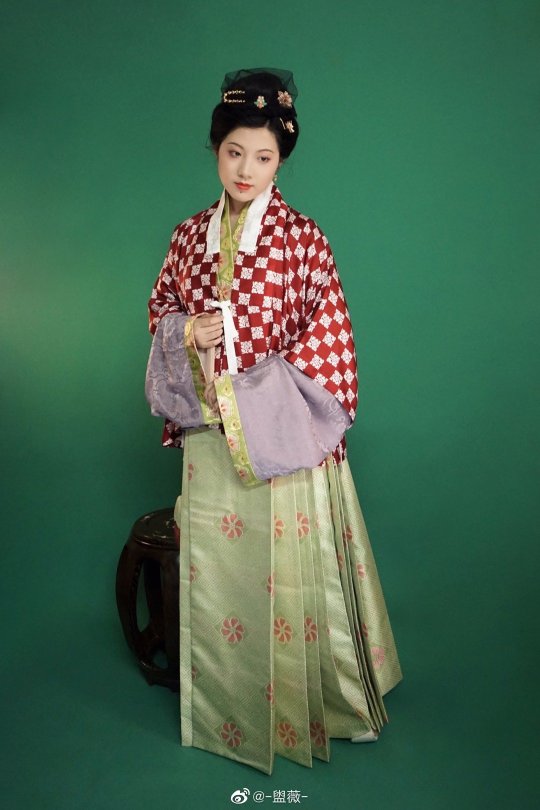
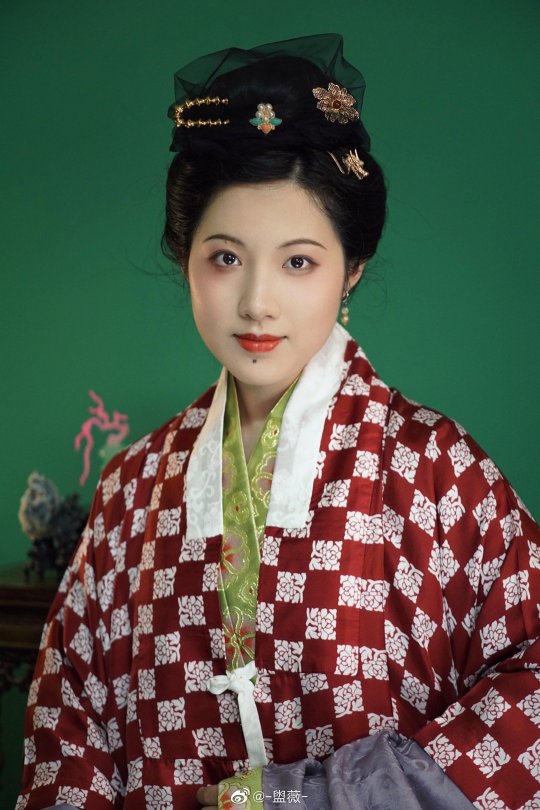
【Historical Reference Artifacts】:
Portraits and Mural of Women in the Late Yuan-Early Ming Dynasties

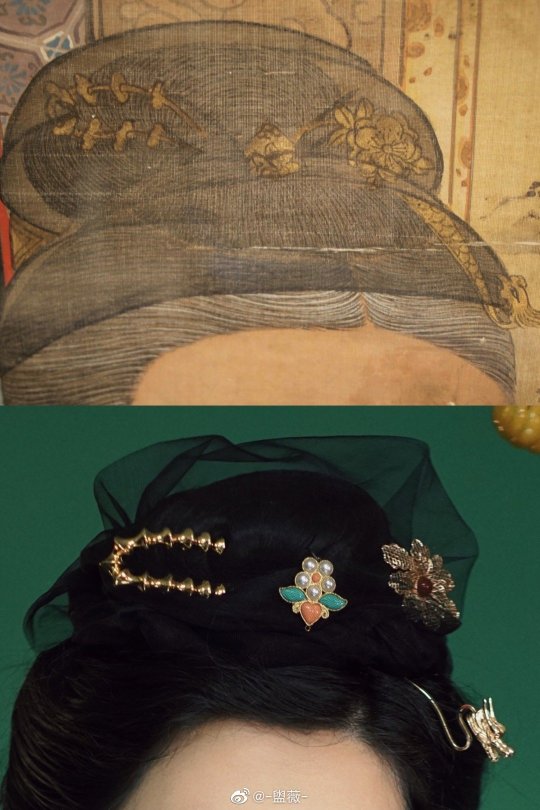
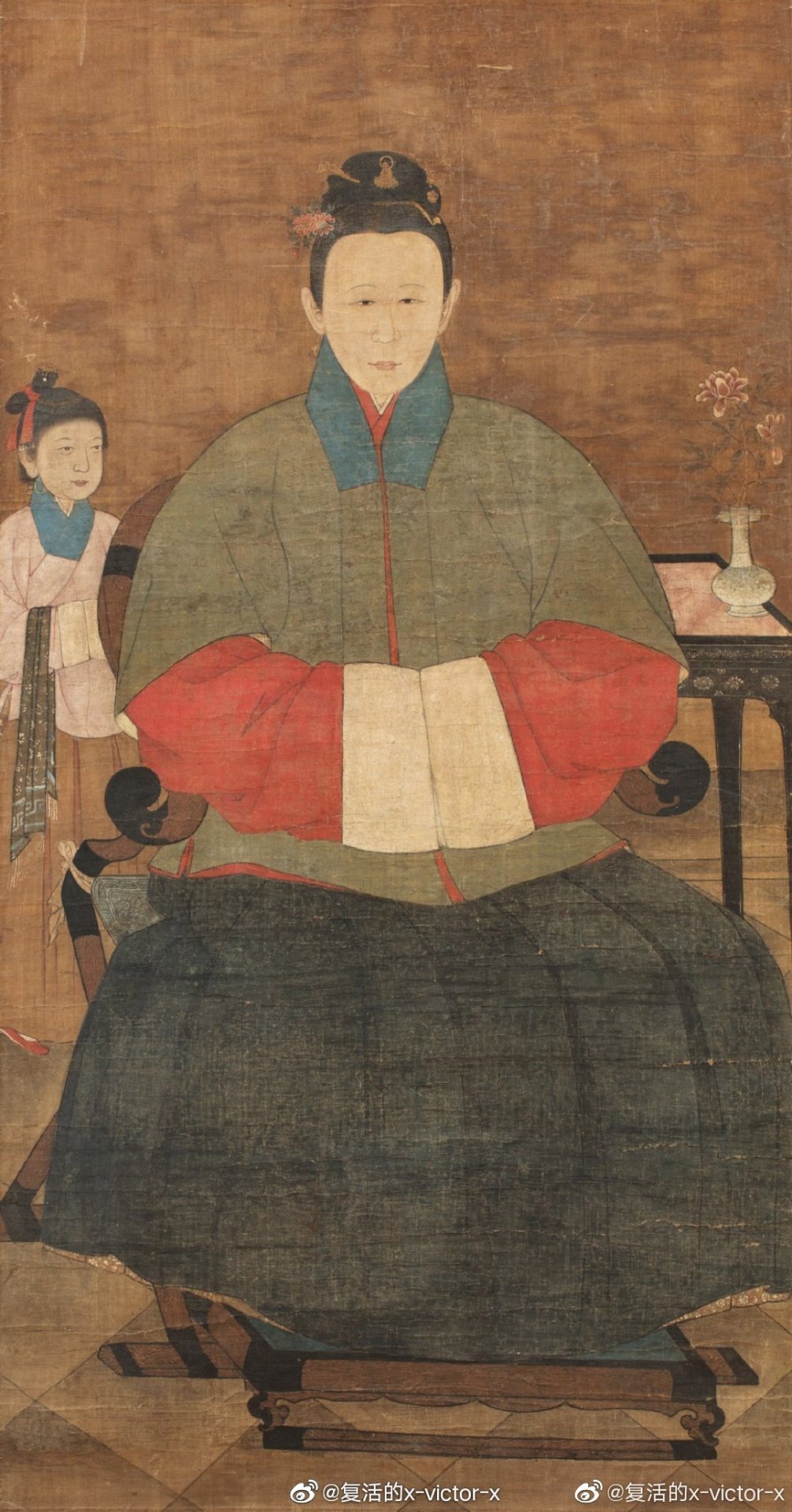
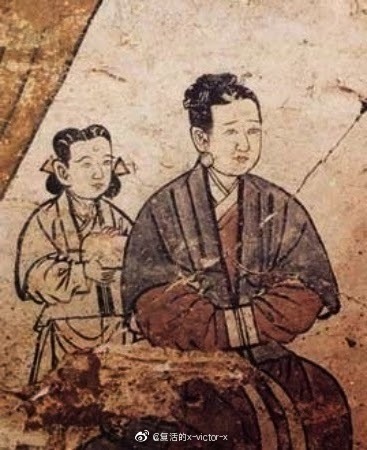
Chinese Ming Dynasty Yongle period(1360–1424) Hanfu Relic: 长袖夹衣&素纱单裙
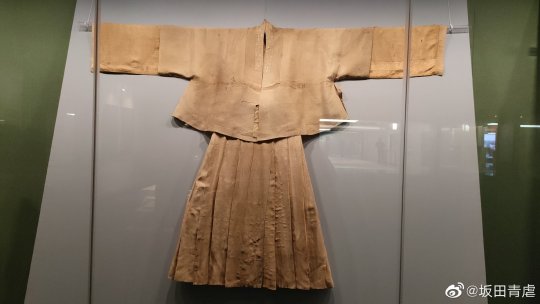
Yuan Dynasty Clothing Relics: 妆花凤戏牡丹纹绫夹衫,Unearthed from the tomb of Wang Shixian(汪世显)'s family in Zhang County,Gansu Provincial Museum Collection
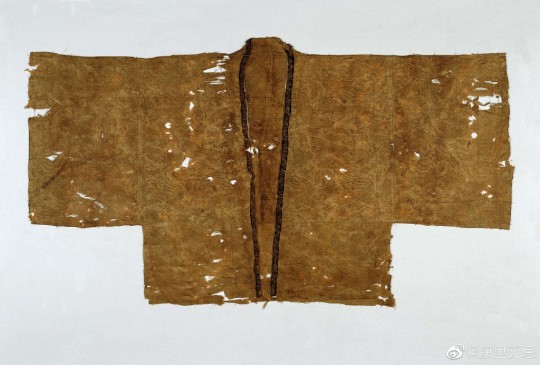
Yuan Dynasty Clothing Relics: 印金团花图案夹衫
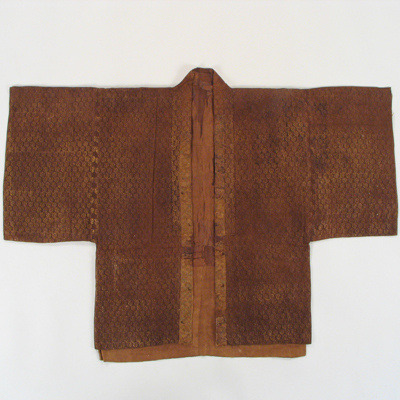
[Hanfu · 漢服]China Late Yuan to Early Ming Dynasties Traditional Clothing Hanfu Refer to Portraits and Mural of Women in the Late Yuan-Early Ming Dynasties
Typical styles of Han ethnic Women in the Late Yuan and Early Ming Dynasties
And it seen that the jacket has a certain connection with the jacket of the Southern Song Dynasty to some extent as blow:
Cotton jacket unearthed from the tomb of Huang Sheng(黄昇) in the Southern Song Dynasty in Fuzhou
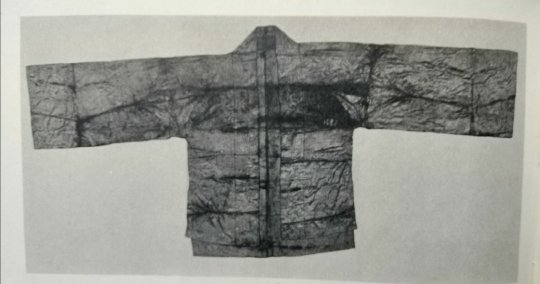
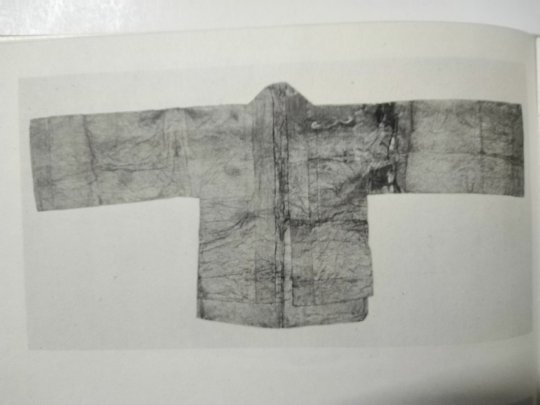
Chinese Southern Song Dynasty Painting<仙馆秾花图>,Collection of National Palace Museum, Taipei

_______
📸Recreation Work: @-盥薇-
👗Hanfu: @YUNJIN云今
💎Earring:@江琛复古生活馆
🔗Weibo:https://weibo.com/3942003133/N6t86nHOM
_______
#chinese hanfu#Late Yuan and early Ming Dynasty#southern song dynasty#Yuan Dynasty#hanfu#chinese fashion#China History#historical fashion#historical hairstyles#hanfu accessories#-盥薇-#YUNJIN云今#@江琛复古生活馆#china
210 notes
·
View notes